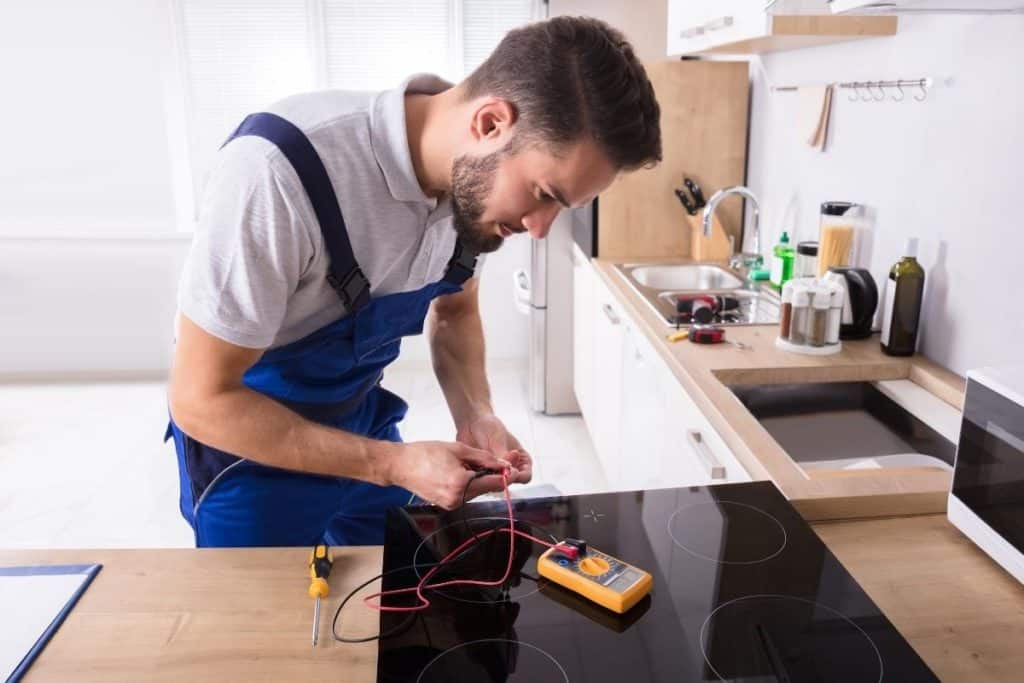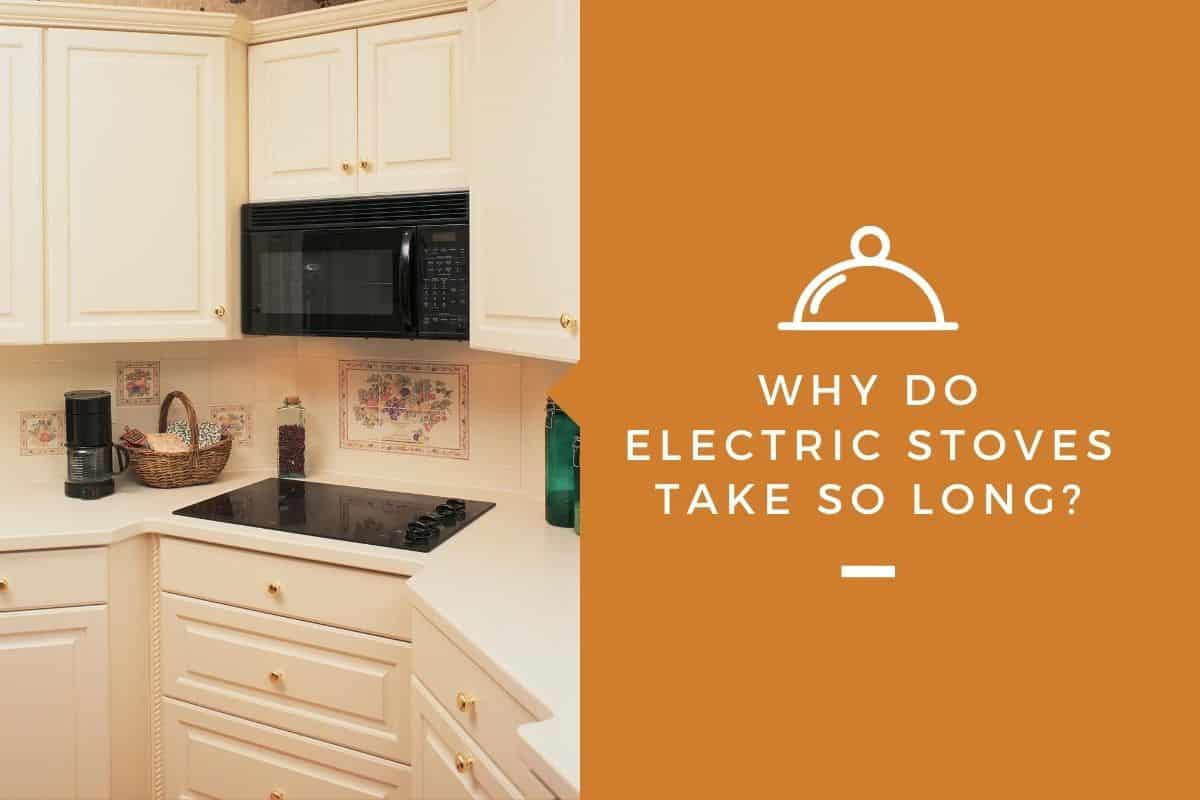Anyone who has ever changed from a gas stove to an electric stove will notice one significant difference — an electric stove takes far longer to cook food than its gas counterpart. While this is frustrating, many people do not understand why this is happening. So, what’s the deal with electric stoves? Why do they take so long, especially when compared to a gas stove?
Electric stoves tend to take longer to cook than gas stoves because of their wattage. While an electric stove may be made with 1,000 watts, a gas burner can be designed with 10,000 watts. This makes an electric burner far slower in comparison. The gas burner will also have better energy transfer as the heat rises on the sides rather than only from the bottom.
If you are curious as to why your electric stove takes forever to heat up, you’ve come to the right place. This blog is going to share some of the few reasons why electric stoves are inferior to gas stoves due to their lengthy cooking times. You will also find some useful tips to ensure you can get the most out of your “slow-poke” electric model.
Why Are Electric Stoves So Slow?
The unfortunate fact of the matter is this — anyone who has ever switched from a gas stove to an electric stove will notice the difference between the two. There is no mistaking that a gas stove is infinitely easier to operate and works quickly and efficiently. Electric stoves don’t have the same convenience. They are slow to heat up and even slower to cook. But why?
There are a few different reasons why an electric stove is so slow. For starters, gas stoves tend to have a higher heat output because of their immense wattage. Electric burners have far less wattage, in most cases. With fewer watts, it is unable to keep up with the firecracker gas stove that spits out heat like nothing.
Another reason why an electric stovetop takes so long is that it only heats the bottom of the pan. A gas model, on the other hand, heats the bottom of the pan and allows heat to rise around the sides of the pan. This allows for extra heat to hit what is sitting inside of the pot, whether it’s scrambled eggs, macaroni and cheese, or soup. (Source: Quora)
One way to combat the slowness of an electric stove is to purchase an electric model with a higher wattage. Since the slowness is determined by watts, spending more money for better wattage is a viable option for the future.
Tips for Cooking with an Electric Stove

Even though electric stoves take much longer to heat up and are more difficult to deal with while cooking, that doesn’t mean that it is impossible. There are plenty of tips for cooking with an electric stove. The following tips will ensure that you’re not struggling with the slow-moving electric stove and can create dishes more easily:
Always Preheat
Perhaps the biggest piece of advice anyone can give you about an electric stove is always to preheat. This means that you should turn on the burner long before you plan to use it. In some cases, an electric stove can take up to 15 minutes to heat up. That gives you plenty of time to prep your ingredients and come back to a burner that is ready for action.
Use the Oven First
Many electric stove users have noticed that sometimes it’s best to skip the burners and head straight for the oven. This is most recommended when using larger items such as cast-iron skillets and dutch ovens. Since it can take a massive amount of time for an electric stove to create enough heat for these larger items, preheat them in the oven first.
Follow these steps to use the oven:
- Heat the oven to 250 degrees.
- Place your cast-iron pan or dutch oven into the oven for around 20 to 30 minutes.
- During this time, you will also want to turn the electric stove burner on.
This process will allow the food to cook more evenly and provide a hot-and-ready burner when you’re done preheating in the oven.
Use an Electric Kettle to Boil Water
Have you ever tried to boil water on an electric stovetop? It takes forever, especially if you are starting with cold water from the sink. To speed this process up, consider using an electric kettle to boil water. Electric kettles take only a few short minutes to bring water to a boil. Then, add the boiling water to your pot.
Allow Time for the Burner to Adjust
An electric burner does not adjust to different temperatures quickly as a gas stovetop does. When using gas, turning the temperature up results in instant heat. Turning it down results in less heat. Electric burners simply do not work this way. It takes a lot of time for the temperatures to change.
If you’re using a recipe that says to boil then simmer, you need to be careful and take the time necessary to adjust the temperature correctly. For instance, when making a bowl of pasta, you don’t want to crank the heat up right away. This will cause the burner to become too hot. Turn it up slowly until you have reached a steady boil. When ready to simmer, lower the temperature gradually.
This will certainly take some time and effort on the chef’s behalf. But it’s worth it. Your food will come out more evenly cooked and delicious.
Consider Using Two Burners
Plenty of recipes will require different levels of heat, such as pasta dishes. The same is true for a variety of other favorites like caramel, rice, and soups.
But trying to fiddle around with the heat can be very challenging, if not entirely frustrating. If you don’t want to spend your entire afternoon in front of your electric burner, there is another option.
Consider using the two-burner method. This method involves one burner being at a high temperature while the other is at a low temperature.
- When your recipe calls for high heat, then place it on the high-temperature burner.
- When ready to be moved to a lower temperature, move it to the cooler side.
(Source: Self)
Benefits of an Electric Stove
It’s not all bad when it comes to the electric stove, though. There are a few great advantages that you can thoroughly enjoy. The biggest thing to do is to get used to using an electric model by following the tips above.
Then, you can enjoy these benefits:
- The kitchen will stay cooler with an electric stove compared to a gas model.
- Cleaning an electric stove is far easier than other stovetops.
- They are safer than gas stoves because they do not involve gas or any other combustible materials. This presents less of a fire hazard and no fear of gas leaks.
- Electric stoves tend to be cheaper than gas ranges.
- Electric stovetops allow you to utilize far lower heat temperatures. This can be challenging on a gas stove.
(Source: 2-10)
Final Thoughts
An electric stove is notably slower than other types of stovetops, including gas and induction. But the slowness can be combated by using some simple cooking techniques such as boiling in an electric kettle and opting for the two-burner method.
Trying to find an electric stove with higher wattage can help to increase the speed since the slowness heavily relies on the lower wattage found in most electric stovetops.

